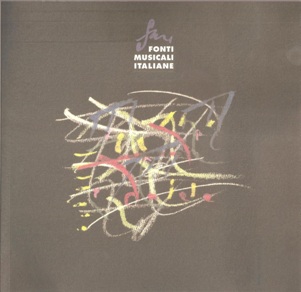Prime intonazioni di un testo guariniano: il caso di “Occhi miei che vedeste” (1574-1587)
Abstract
Il madrigale Occhi miei che vedeste, non apparso nelle Rime (1598) del Ciotti, è attribuito a Guarini nell’edizione delle Opere (1737) curata da Tumermani, che lo classifica tra le rime «sparse in diverse stampe o raccolte da rimatori diversi». Verificandone l’inclusione tra i soli 15 testi pubblicati dopo un’unica presenza in una stampa cinquecentesca (in questo caso il Raccolto d’alcune piacevoli rime del 1582) e anche rilevando l’indubbio interesse dei 21 autori che lo musicano (tra cui Vinci, Galilei, Macque, Baccusi, Cifra, Scaletta, Nenna), un esame più approfondito ha condotto a rideterminare la sequenza cronologica delle prime intonazioni e ad attestare l’intreccio di specifiche correlazioni con la trasmissione e la circolazione del repertorio poetico guariniano. Oltre al reperimento di due intonazioni monodiche del testo (non attestate fino al 1991) incluse in una raccolta manoscritta (il Libro di canzoni et arie di Cosimo Bottegari, 1574) e antecedenti sia l’intero repertorio monodico fiorito sulla produzione del poeta, sia la sequenza specifica dei successivi 20 brani realizzati su Occhi miei, la ricerca ha infatti consentito di attestare: l’analogia pressoché totale di una delle intonazioni del manoscritto di Bottegari (entrambe per voce e liuto) con il Canto di Occhi miei pubblicato nei Madrigali a 5 voci di Cristofano Malvezzi (1583); il riscontro di una fonte poetica (un codice fiorentino secentesco) che, pur presentando il testo di Occhi miei come adespoto, ne rivela piena concordanza con la lezione edita da Tumermani, proponendosi come unico testimone della trasmissione manoscritta del testo.
Alla preminenza dell’area toscana può dunque ascriversi il merito di inaugurare la fortuna di un testo che raccoglie i frutti essenziali all’avvio della propria diffusione in musica senza giovarsi di effettivi supporti letterari e che trova un veicolo quasi esclusivo di fioritura nell’operato di due compositori e nelle distinte motivazioni che li guidano a confrontarsi con Occhi miei: Bottegari, oltre a incrementare il successo di certo repertorio profano coevo, si mostra particolarmente attratto dal componimento, al punto da proporne una seconda originale intonazione; Malvezzi conferma una certa propensione ad appropriarsi per primo, tra i musici medicei, di testi guariniani poi oggetto di larga attenzione in area non soltanto toscana. Destinata nell’arco di un cinquantennio a competere con quella di altre più celebri rime, la fortuna di Occhi miei assicura pertanto allo stesso Guarini un’importante verifica di rendimento in quel decennio (1571-1582) per lui ancora privo di gratificazioni ufficiali, ma decisivo per l’organizzazione e la revisione di un repertorio letterario ormai sempre più finalizzato alle peculiari esigenze del «soave canto».
*****
First intonations of a Guarini text: the case of “Occhi miei che vedeste”
The madrigal Occhi miei che vedeste, which did not appear in the Rime (1598) of Ciotti, is attributed to Guarini in the edition of his Opere (1737) edited by Tumermani who classifies it among the verses “scattered in various publications or gathered by diverse poets”. Verifying its inclusion in the only 15 published texts, after a single presence in a sixteenth-century publication (the Raccolto d’alcune piacevoli rime of 1582), and also noting the undoubted interest of the 21 authors who set it to music (including Vinci, Galilei, Macque, Baccusi, Cifra, Scaletta, Nenna), a more thorough examination has led to a redetermination of the chronological order of the first intonations and to establishing specific correlations with the transmission and circulation of the poetic repertory of Guarini. Apart from the discovery of two monodic intonations of the text (not known until 1991) included in a manuscript collection (the Libro di canzoni et arie of Cosimo Bottegari, 1574) and antecedent both to the whole monodic repertory flourishing around the production of the poet and to the specific sequence of the subsequent 20 compositions realized on Occhi miei, the research has in fact made it possible to certify: first, the almost total analogy of one of the intonations in the manuscript of Bottegari (in both cases for voice and lute) with the Canto of Occhi miei published in Cristofano Malvezzi’s Madrigali a 5 voci (1583); secondly, the correspondence with a poetic source (a seventeenth-century Florentine codex) which, although presenting the text of Occhi miei as adespota, reveals its complete consistency with the lection edited by Tumermani, proposing itself as the one and only witness of manuscript transmission of the text.
To the pre-eminence of the Tuscan area can therefore be ascribed the merit of inaugurating the fortune of a text which plucks the fruits essential to the launching of its diffusion in music without availing itself of effective literary backing and which finds an almost exclusive means of flowering in the work of two composers and in the different motivations that led them to confront Occhi miei: Bottegari, in addition to increasing the success of a certain coeval secular repertory, appears to be particularly attracted by the composition, even proposing a second original intonation; Malvezzi confirms a certain propensity to appear as the first of the Medicean musicians to take possession of Guarini texts, subsequently the object of widespread attention in areas other than Tuscany. Destined in the space of fifty years to compete with other more celebrated verses, the good fortune of Occhi miei nevertheless secured Guarini an important recognition during that period of ten years (1571-1582, when official gratification was still lacking) which was decisive for the organization and revision of a literary repertory by then always more concerned with the specific exigencies of “canto soave”.
Downloads
Published
Issue
Section
License
© CIDIM
Tutti i diritti riservati


